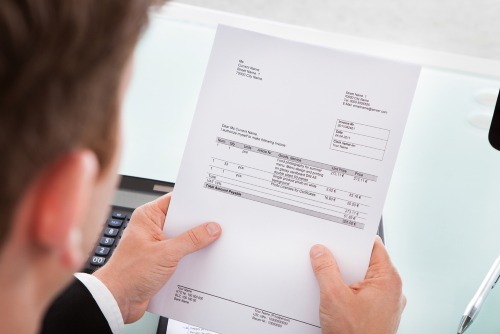In the Official Gazette (Part I) no. 1065 of November 8, 2021 was published the ANAF Order no. 1365/2021 for the approval of the Procedure for use and functioning of the national system regarding the electronic invoice RO e-Invoice, as well as for receipt and download of the electronic invoice by the recipients of the electronic invoice issued in the B2G relationship in the national system regarding the electronic invoice RO e-Invoice.
The national system regarding the electronic invoice RO e-Invoice is available in the computer system Virtual Private Space. The economic operators that register in the SPV for the use of the RO e-Invoice system are subject to the provisions of OMFP no. 660/2017, with the subsequent modifications and completions. According to the EMERGENCY ORDINANCE no. 120/2021, electronic invoicing in the field of public procurement is applied in case of the existence of a B2G relationship, in the situation where the economic operators opt for the use of the national system regarding the electronic invoice RO e-Invoice. In case the economic operator has opted for the use of the national system regarding the electronic invoice RO e-Invoice, it has the obligation to issue only electronic invoices and to use this system for their transmission to all recipients.
The procedure establishes the framework for the use and operation of the national system regarding the electronic invoice RO e-Invoice, as well as the receipt and download of the electronic invoice by the recipients of the electronic invoice issued in the B2G relationship in the national system regarding the electronic invoice RO e-Invoice.
The RO e-Invoice system is created, developed and administered by the Ministry of Finance, through the National Center for Financial Information.
In order to use the RO e-Invoice IT system, the economic operators must be registered in the Virtual Private Space (SPV) in their own name or through a legal representative, through a designated representative or through a proxy.
To use the RO e-Invoice system in the B2B relationship, the issuer and the recipient must be registered in the RO e-Invoice Register.
The contracting authorities and entities provided in art.2 paragraph (1) letter m) of the EMERGENCY ORDINANCE no. 120/2021 must be registered in the Register of public entities, according to the provisions of the Order of the Deputy Prime Minister, Minister of Public Finance, no. 2004/2013 for approving the procedures regarding the register of public entities and the register of other entities, with amendments and subsequent additions.
According to the recently published normative act, the issuer of the electronic invoice prepares the file corresponding to the electronic invoice in XML format, according to the technical documentation published in the section dedicated to RO e-Invoice available on the portal of the Ministry of Finance, respectively to the National Fiscal Administration Agency. The XML file must comply with the European standard EN 16931 (basic semantic model of the electronic invoice) and the national RO-CIUS rules provided in the specific legislation.
For the transmission of the electronic invoice, the issuer uses the electronic identification means for accessing the SPV, for:
- interconnecting the application available at the issuer level with the RO e-Invoice system, using a series of microservices exposed in the form of an API (Application Programming Interface);
- use of applications provided free of charge by the Ministry of Finance.
The technical documentation for the microservices and applications provided above is available at www.efactura.mfinante.ro.
Following the transmission of the electronic invoice, the RO e-Invoice system automatically assigns an identification number, used as a reference in the system-specific processes and operations.
After sending the electronic invoice, the RO e-Invoice system performs the following operations, automatically, on the XML file, as follows:
- a) checks and validations regarding the structure and syntax;
- b) semantic checks.
After performing these operations, an automatic response message is generated. In the situation where no errors are identified, the electronic signature of the Ministry of Finance is applied, certifying the receipt of the electronic invoice in the RO e-Invoice system.
The original copy of the electronic invoice is considered the XML file accompanied by the electronic signature of the Ministry of Finance, which is made available to the issuer, respectively to the recipient, in the RO e-Invoice system, in the form of a zip archive file.
If errors are identified, the electronic invoice is not considered transmitted in the system, respectively it is not received by the recipient, the issuer receiving an XML file containing the identified errors, accompanied by the electronic signature of the Ministry of Finance, in the form of an archive file. zip type.
After correcting the identified errors, the issuer sends the electronic invoice in the RO e-Invoice system. It is useful to specify that, during the whole period of automatic verifications, the issuer can interrogate in the system the state of the transmitted file.
After performing the automatic checks, the previously mentioned files will be available in the system for download.
Regarding the receipt and download of the electronic invoice, there are different rules depending on the relationship between the invoice issuer and the recipient (ie some for B2G and others for B2B), but notifications regarding the receipt of downloadable invoices will come to the e-mail address associated with the SPV account.
It is very important to emphasize that the date of communication of the electronic invoice to the recipient is considered the date on which the electronic invoice is available to him for download from the RO e-Invoice system.
The files corresponding to the electronic invoice in XML format and the error messages are available for download 60 days from the moment of publication in the system, and subsequently they will be archived electronically in accordance with the legal provisions in force and issued upon request.
We specify the fact that, also in the Official Gazette no. 1065 of November 8, the Order of the Ministry of Finance 1366/2021 was published, which includes the technical and use specifications for the basic elements of the electronic invoice.
Thus, through the two orders of Finance and through the order of ANAF, the authorities solved the secondary legal framework of the e-Invoice system. At the moment, there is still no official announcement about the effective operationalization of electronic invoicing.
According to the authorities, in the first phase, electronic invoicing in the B2G relationship will be operationalized, exclusively for the field of public procurement. Electronic invoicing in the B2B relationship will be operationalized later. In both cases, the use of the e-Invoice system will be optional for companies.

